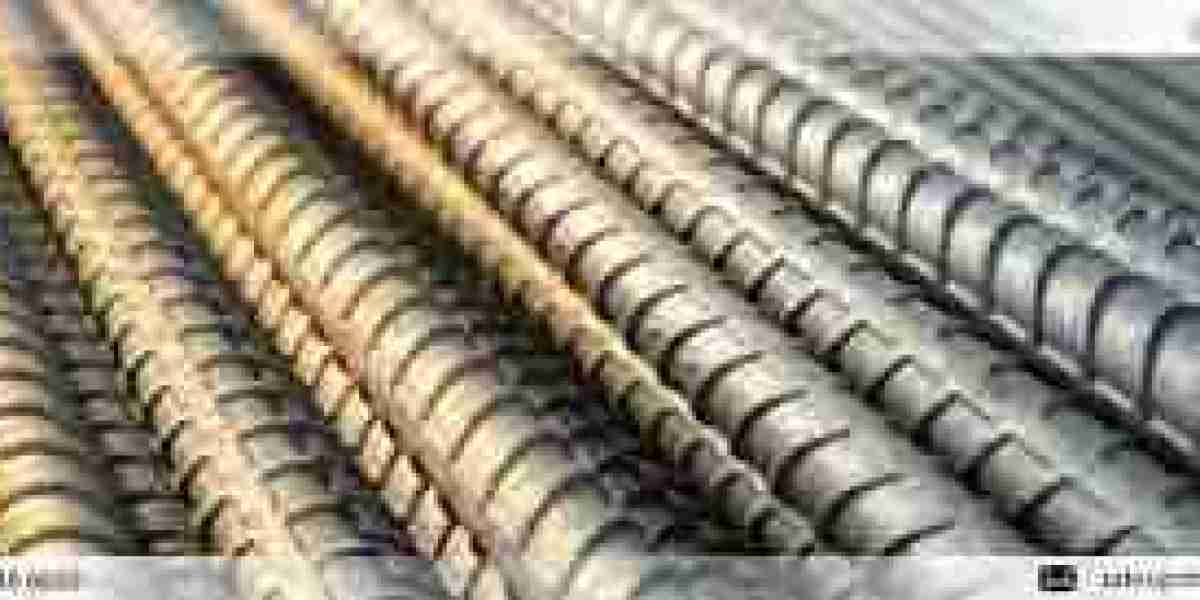Steel rebar, or reinforcing steel, plays a critical role in the construction and infrastructure industries. It strengthens concrete structures, ensuring durability and stability. However, despite its high demand, the global steel rebar market faces several significant restraints that hinder its growth and expansion. From fluctuating raw material prices to stringent environmental regulations, multiple factors contribute to market limitations.
1. Volatility in Raw Material Prices
One of the most pressing issues in the steel rebar market is the volatility of raw material costs. Steel production heavily relies on iron ore, scrap metal, and energy sources such as coal and electricity. Any fluctuations in the prices of these essential inputs can lead to unpredictable production costs.
- Supply Chain Disruptions: Global supply chain issues, such as trade restrictions, geopolitical conflicts, and transportation bottlenecks, have led to inconsistent material availability.
- Inflation and Currency Fluctuations: Global inflation and currency depreciation in steel-producing countries affect the overall cost of manufacturing and exporting steel rebar.
2. Stringent Environmental Regulations
As industries worldwide move towards sustainability, steel rebar manufacturers face increasing pressure to comply with environmental regulations. The steel production process is highly energy-intensive and contributes significantly to carbon emissions. Governments and regulatory bodies have introduced stricter emission control policies, forcing companies to invest in eco-friendly technologies.
- Emission Control Costs: Adopting greener technologies such as electric arc furnaces (EAF) and carbon capture methods requires substantial investment, increasing production costs.
- Recycling Challenges: While scrap metal recycling can reduce emissions, inconsistent recycling infrastructure and quality concerns limit its widespread adoption.
3. Economic Slowdowns and Construction Industry Decline
The steel rebar market is closely tied to the construction industry. Any slowdown in global construction activities directly impacts demand for rebar. Economic recessions, high-interest rates, and reduced public spending on infrastructure projects can significantly restrain market growth.
- COVID-19 Aftermath: The pandemic caused disruptions in the construction sector, delaying several infrastructure projects and reducing steel rebar consumption.
- Housing Market Decline: High mortgage rates and reduced affordability have led to a slowdown in residential construction, further limiting demand for rebar.
4. Labor Shortages and Skilled Workforce Constraints
Manufacturing and construction industries are experiencing labor shortages due to various socio-economic factors. A decline in skilled labor availability affects productivity and efficiency in the steel rebar market.
- Aging Workforce: Many skilled workers in steel production and construction are nearing retirement, and there is a lack of younger workers entering these fields.
- Technological Adaptation Issues: While automation and digitalization are emerging solutions, a lack of skilled workers to operate advanced machinery poses additional challenges.
5. Trade Barriers and Import-Export Restrictions
International trade policies and tariffs significantly impact the global steel rebar market. Several countries impose import duties on steel products to protect their domestic industries, leading to price fluctuations and reduced market accessibility.
- U.S.-China Trade War: Ongoing trade tensions between major economies have resulted in tariffs on steel imports, affecting global supply chains.
- Protectionist Policies: Many governments impose anti-dumping duties and safeguard measures, limiting the free flow of steel rebar across borders.
6. Market Competition and Technological Limitations
The steel rebar market is highly competitive, with established players dominating the industry. Smaller manufacturers struggle to keep up due to high capital requirements and technological advancements.
- High Production Costs for New Entrants: Setting up a steel manufacturing plant requires heavy investments in machinery, infrastructure, and compliance with regulations.
- Slow Adoption of Smart Technologies: While automation and AI-driven quality control systems can improve production efficiency, adoption is slow due to high implementation costs.
Conclusion
Despite its critical role in construction and infrastructure, the steel rebar market faces numerous restraints that limit its growth potential. Volatile raw material costs, environmental regulations, economic downturns, labor shortages, trade barriers, and technological challenges all contribute to market instability. While manufacturers are exploring sustainable solutions and technological advancements to address these challenges, overcoming these barriers requires coordinated efforts from industry stakeholders, policymakers, and global trade bodies.




